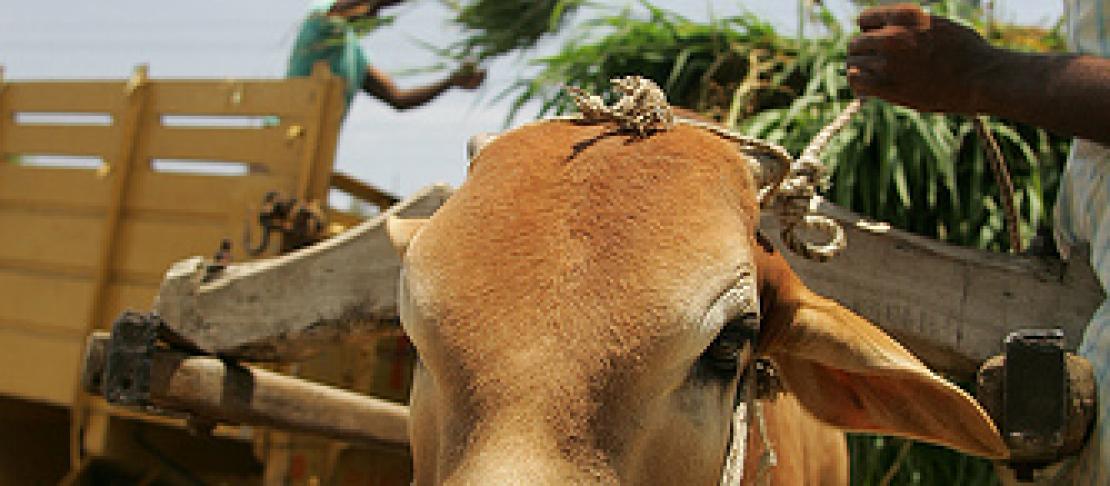Emissions efficiency: are some animals more equal than others?

The recent Foresight report on the future of food and farming provides a rich evidence base to guide decisions today that will secure food and agriculture in decades to come. But a striking message from Foresight is that strong science is insufficient to guide policy. Putting our microscope to just one among the 100 background studies shows how technical evidence can inform, but not substitute for, societal consensus.
Where are the best opportunities for reducing greenhouse gas emissions in the food system (including the food chain)? by Tara Garnett is one of those rare articles that answers the question presented in the title. Enhanced carbon storage, greater efficiency, and changed patterns of consumption give the best set of options, provided they are tackled together. Not surprisingly though, the detail is what counts.
In high-income countries, total emissions along the food chain are split 50:50 between pre-farmgate activities – agriculture mainly, plus manufacture of inputs like fertilizers – and the post-farmgate stages of processing, packaging, storage, distribution and preparation of food. Garnett’s article does not consider the scarcer evidence for middle- and low-income countries, but a recent analysis from India estimates that only 13% of total emissions come from post-farmgate stages, due to much less transport and refrigeration.
Agriculture, then, provides the main challenge and opportunity globally to reduce emissions from the food chain. Of the various options, some of the best lie in efficiency measures that reduce emissions per unit of output or input. Impressive yield increases in meat and dairy, the most emissions-intensive agricultural sectors, can be achieved through specialist breeding and feeding, balanced against animal welfare.
Importantly, how we measure efficiency determines which livestock systems deliver the lowest emissions. Intensive production of monogastrics (pigs and poultry) gives the lowest kg CO2equivalent per kg product. In Africa where anaemia affects 68% of young children and most farms are non-mechanised, we may instead want to consider kg CO2equivalent per g iron, or per unit of draught power for plows and carts. Here cows come out better.
Land-based metrics of greenhouse gas emissions have been proposed as a sensible alternative to quantity-based metrics for the UNFCCC. Garnett explains how intensive livestock rearing may, paradoxically, compare unfavourably to extensive grazing in CO2equivalent per hectare, particularly if the land measure is of prime cropland devoted to producing animal feed. Resource-based metrics, such as emissions per unit of environmental services, are also meaningful. Household pigs and chickens – very small-scale but highly integrated into nutrient and energy cycles – seem more efficient when measured in terms of avoided use of prime land and prime feed.
How countries navigate the trade-offs inherent in these different efficiency metrics depends on their interest groups and policy priorities. Agriculture delivers a suite of returns that have different values for different people. It is not just about what works best technically but how we value natural environments, cultures of eating, rural development, ethical concerns and so on. Poor farmers and consumers should naturally be party to this debate.
We welcome your comments and responses to this article below.
This blog is part of the series AgClim Letters, a monthly newsletter on science and policy written by Sonja Vermeulen, Head of Research for CCAFS. Sign up to receive this as an email bulletin.